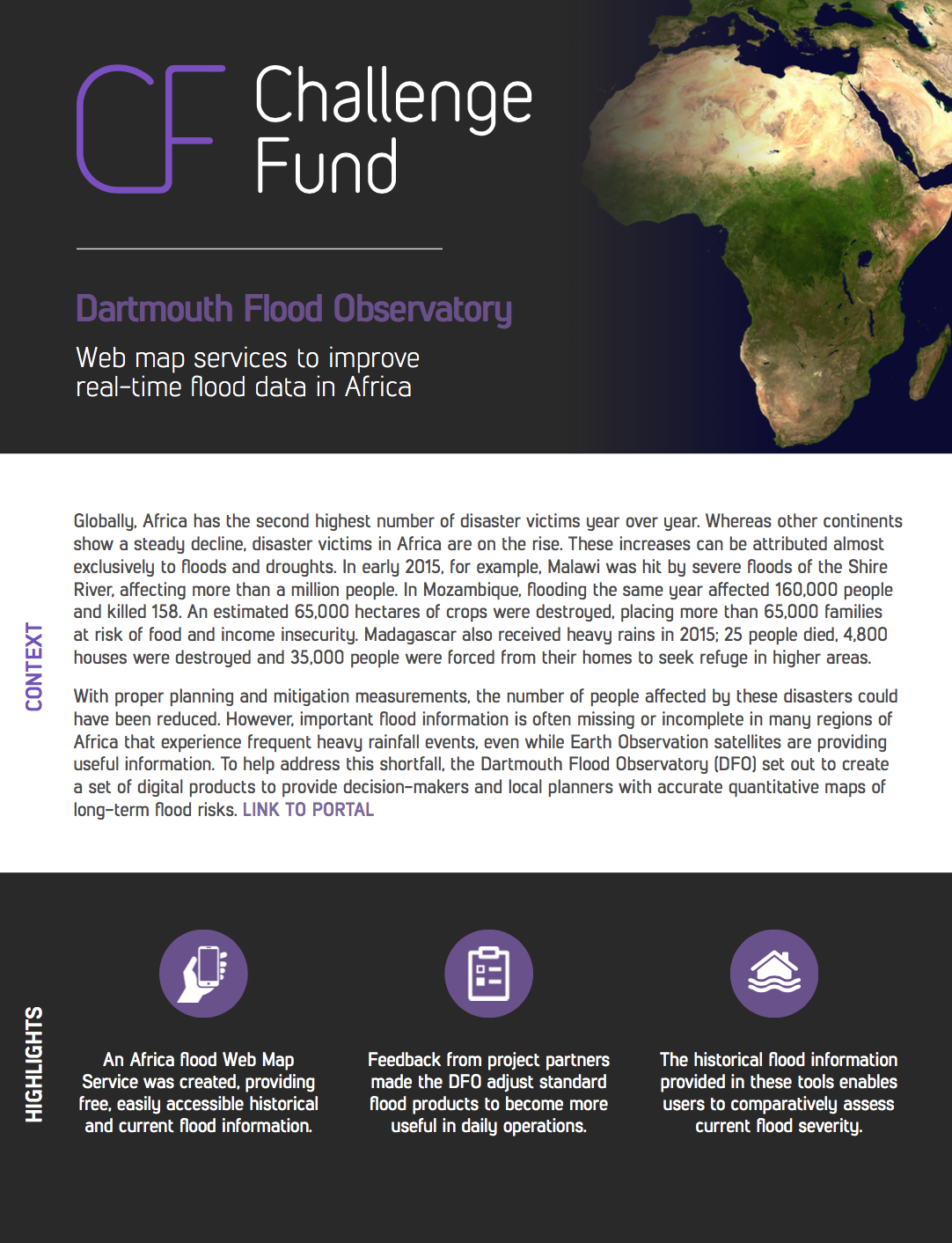Globally, Africa has the second highest number of disaster victims year over year. Whereas other continents show a steady decline, disaster victims in Africa are on the rise. These increases can be attributed almost exclusively to floods and droughts. In early 2015, for example, Malawi was hit by severe floods of the Shire River, affecting more than a million people. In Mozambique, flooding the same year affected 160,000 people and killed 158. An estimated 65,000 hectares of crops were destroyed, placing more than 65,000 families at risk of food and income insecurity. Madagascar also received heavy rains in 2015; 25 people died, 4,800 houses were destroyed and 35,000 people were forced from their homes to seek refuge in higher areas.
With proper planning and mitigation measurements, the number of people affected by these disasters could have been reduced. However, important flood information is often missing or incomplete in many regions of Africa that experience frequent heavy rainfall events, even while Earth Observation satellites are providing useful information. To help address this shortfall, the Dartmouth Flood Observatory (DFO) set out to create a set of digital products to provide decision-makers and local planners with accurate quantitative maps of long-term flood risks.

